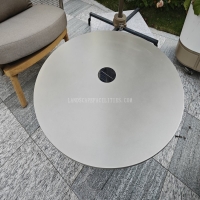Welcome to the website for landscape facilities products and knowledge.
Are there any limitations on the bin’s capacity based on the frequency of collection?
The relationship between bin capacity and collection frequency is a critical factor in efficient waste management. Most municipalities and waste service providers set specific guidelines linking bin size to pickup schedules.
For weekly collections, standard bins (60-90 liters) are often sufficient for average households. Biweekly collections typically require larger capacities (120-240 liters) to accommodate extended storage. Commercial operations with daily pickups may use smaller bins since waste doesn't accumulate as long.
Key limitations include:
1. Overflow restrictions - Most collectors won't service overflowing bins
2. Weight limits - Heavy bins may exceed truck lifting capacity
3. Space constraints - High-density areas often have smaller bin requirements
4. Seasonal variations - Some locations adjust schedules based on seasons
Recycling programs frequently have different capacity rules than regular waste, sometimes requiring separate bins for different materials. Smart cities are increasingly implementing sensor-based systems that optimize collection routes based on actual fill levels rather than fixed schedules.
When selecting bin size, consider your waste generation patterns, available storage space, and local regulations. Many waste companies provide online calculators to help determine the optimal capacity-frequency combination for specific needs.
Related search:

Recommendation
Outdoor stainless steel table with solar-powered ambient lighting feature - excellent design.